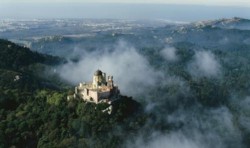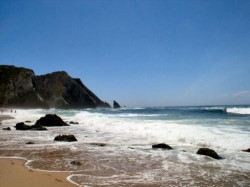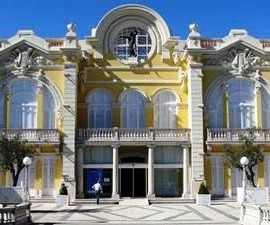Portugal is renowned for its protected parks and areas of natural beauty. The country boasts no less than thirteen natural parks, one national park, several natural reserves and numerous protected landscapes.

The Sintra-Cascais Natural Park is one of Portugal’s thirteen designated Natural Parks, stretching from the Sintra town, nestled in the hilltops of the Sintra mountain range, out to Cabo da Roca in the west, which mark’s the westernmost point of the European continent, and down across the plains to Cascais on the Estoril coast to the south.
The area earned its official designation as a Natural Park in 1994 and covers a total area of 145 km2. Thanks to its location just 30km west of Lisbon and the popularity of Sintra and Cascais as tourist destinations in their own right, it is a popular area for exploration and adventure by visitors from all over Portugal, Europe and beyond.
Where architecture and natural beauty meet
The Sintra-Cascais Natural Park is notable for its wide range of landscapes in comparison to its relatively small size, leading UNESCO to classify part of it as a World Heritage Landscape and the European Union to place much of it under its Habitats Directive as a site of community importance. It offers a unique combination of and sea, of beautiful natural scenery and of enchanting architectural heritage.
This is an area where the spires of baroque palaces and escarpments of military castles preside over the lush greenery of the mountain landscape, giving way to the rugged coastline of the Atlantic shores beyond, mixing old and new, nature and nurture in equal measure to dramatic effect.
The Park is separated more or less into two parts – the agricultural area, which is a major fruit and wine producing area as well as producing horticultural products, and the coastal area which is characterised by beaches, cliffs and dunes and flanked by the pine woods that rise away from the water.
Our Nature tour works its way west from Sintra, away from the spires and palaces that erupt through the lush greenery of the mountain peaks, down over the lush green plain of agricultural land as far as the coast, and making its wa south along the shoreline, taking in various well known natural landmarks along the way.
Heading coastward across the plain one can appreciate the natural beauty of the area, tempered only by agricultural activity and several golf courses that have established themselves here over the decades.

If your itinerary allows, this is the perfect spot to indulge in walking, trekking, horse riding, mountain biking, climbing or abseiling and there are several operators and guides in the area. For up-to-date details contact the tourist office in Sintra on your arrival and research country house hotels or “Quintas” as accommodation options before you travel, as these frequently offer excellent opportunities to explore the natural phenomena of the region right on your doorstep.
Sintra’s beaches are something of a hidden gem, often overlooked by visitors in favour of the more sophisticated Cascais waterfront, but to miss them would be to do the area an injustice.
Praia de Adraga is a lovely little triangle of sand sandwiched between two towering cliffs. Praia de Adraga is accessible by car with parking, and makes the perfect spot for a quick stop before walking the 50-minute cliff-top trail towards the village of Almoçageme and on to the dramatic Praia Grande. It is here at Praia Grande that 120-year-old dinosaur footprints can be seen clearly imprinted in the rock face.
This section of the Atlantic coast is teeming with marine species and make an interesting area for exploring the rock pools, fishing on and off shore and of course enjoying the fruits of the sea in the many fish and seafood restaurants that are to be found on the shores. Octopus, squid and cuttlefish abound along with mussels and clams and a whole host of crustaceans just waiting to be discovered.
Finish your day of natural explorations at Europe’s westernmost point, Cabo da Roca. Here at Cabo da Roca you can enjoy some dramatic views from the high cliffs and rock formations that fall away sharply to the wild seas below.

